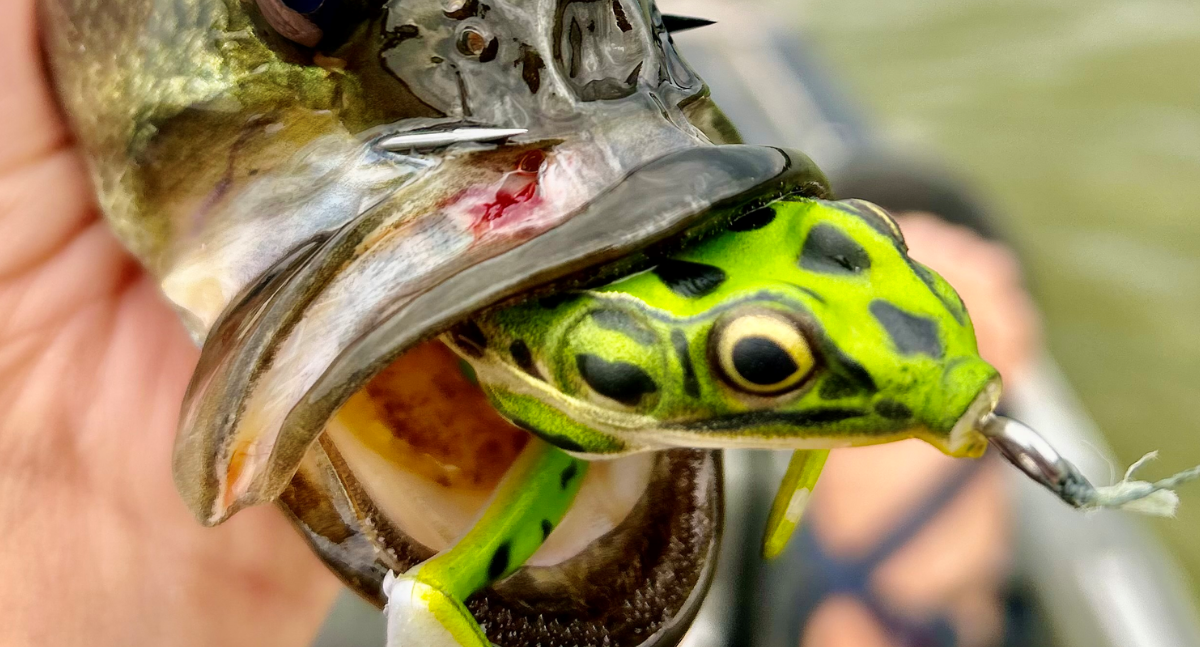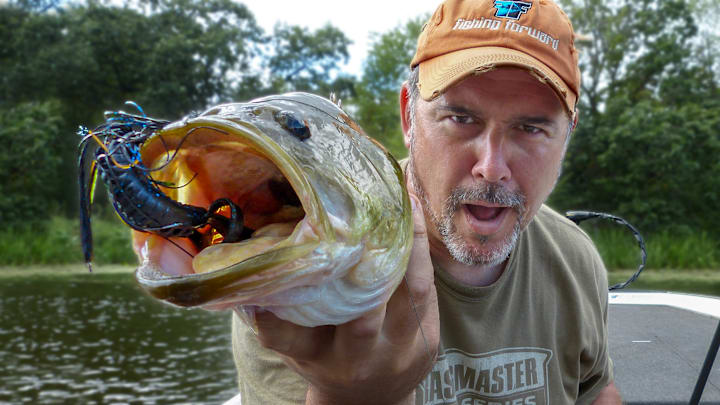How to Match Proven Best Bass Lures South Africa to Local Water Conditions
Wiki Article
Discover the very best Techniques for Choosing Bass Lures for Your Following Fishing Expedition
Selecting the ideal bass Lures can considerably impact angling success. Anglers need to think about different aspects, such as seasonal patterns and water quality. Recognizing bass habits is important (Bass Lures). Choosing Lures that imitate all-natural target can lead to better results. Yet, numerous are uncertain regarding the very best strategies to implement. What approaches should one focus on to improve their fishing experience? The responses exist in analyzing certain problems and adapting as necessaryUnderstanding Bass Behavior and Environment
Recognizing the subtleties of bass habits and habitat is essential for any angler intending to enhance their angling success. Bass are commonly located in different environments, consisting of storage tanks, rivers, and lakes, where they look for framework such as immersed rocks, greenery, and dropped trees. Their habits is greatly influenced by water temperature level, light levels, and readily available forage.Throughout warmer months, bass have a tendency to be a lot more energetic, commonly populating shallower waters, while in chillier months, they pull away to much deeper locations. In addition, bass show patterns of feeding, usually being more aggressive throughout dawn and dusk. They are opportunistic killers, taking advantage of smaller sized fish, insects, and crustaceans. Recognizing these elements can help anglers determine prime fishing areas, along with the best times to fish. Acknowledging bass behavior in relation to their environment is critical for successful fishing, leading anglers in making notified choices about where to cast their lines.
Matching Lures to Seasonal Conditions
As fishermens adjust their strategies to changing seasons, matching Lures to seasonal problems comes to be an important approach for enhancing fishing success. In springtime, when bass are emerging from winter season inactivity, anglers usually utilize spinnerbaits and shallow-running crankbaits to imitate the motions of victim. Summer season requires a change to topwater Lures or soft plastic worms, as bass seek shade and cooler waters. During the fall, when bass are fattening up prior to winter months, bigger Lures that copy baitfish can be efficient. Winter months asks for a much more refined strategy; jigs and slow-moving finesse baits often yield far better results as bass end up being inactive. Comprehending these seasonal patterns assists anglers pick the appropriate attractions, therefore boosting their opportunities of an effective catch. By aligning lure selections with the all-natural habits of bass throughout the year, anglers can maximize their angling experience and boost their total success on the water.The Importance of Shade Selection
Color choice plays an essential function in bass angling, as it can significantly affect a fisher's success. Aspects such as water clarity, seasonal modifications, and the certain choices of different bass types all influence which colors are most efficient. Recognizing these aspects permits anglers to make informed options that improve their fishing experience.
Water Quality Factors To Consider
When the water clearness varies, choosing the right bass appeal color becomes critical for bring in fish. In clear water, all-natural shades such as shad or bluegill patterns have a tendency to be much more effective, as they mimic the target bass are accustomed to seeing. Conversely, in dirty or stained water, brighter shades like chartreuse or fire tiger can enhance exposure, making it much easier for bass to spot the appeal. The contrast between the appeal and the surrounding environment plays a considerable duty in angling success. Anglers need to also take into consideration the time of day; lighter colors may function much better in intense sunlight, while darker hues can be much more reliable during low-light conditions. Adapting attraction shade to water quality maximizes the chances of a successful catch.Seasonal Shade Patterns
How do seasonal modifications impact bass behavior and attraction performance? As temperatures shift throughout the year, bass change their feeding routines and favored environments, making shade option critical for successful angling. In springtime, when bass generate, intense shades like chartreuse can attract attention. Summer season usually require more natural colors, such as green pumpkin or shad patterns, as bass look for to blend in with their environments. During loss, lively colors like orange and red simulate the changing vegetation, luring bass as they get ready for wintertime. In winter season, restrained tones such as gray or white might be a lot more effective, as bass become lethargic. Ultimately, understanding seasonal color scheme makes it possible for anglers to pick Lures that reverberate with bass's present habits, enhancing their chances of success.
Species-Specific Preferences
Comprehending species-specific preferences is important for anglers looking to optimize their lure option. Various bass varieties, such as largemouth and smallmouth, display one-of-a-kind shade preferences based on their habitat and feeding habits. Largemouth bass typically like darker shades, especially in murky waters, where shades like dark and black eco-friendly imitate natural target. On the other hand, smallmouth bass are more probable to reply to brighter colors, such as chartreuse and orange, particularly in clear waters. Additionally, water quality and light problems can influence these choices, making it crucial for fishermens to adapt their lure color as necessary. By taking into consideration these species-specific preferences, fishermens can raise their possibilities of a successful fishing expedition, inevitably boosting their total experience on the water.Selecting the Right Entice Kind for Different Circumstances
Selecting the ideal attraction kind for various angling scenarios is crucial for success on the water. Fishermens must take into consideration aspects such as water quality, climate condition, and the bass's feeding behaviors. For murky water, darker-colored attractions, such as jigs or spinnerbaits, can be efficient, as they create a strong shape. In clear water, natural-colored Lures like soft plastics or topwater lures might entice skeptical bass.When angling in heavy cover, utilizing weedless gears or heavy jigs can help browse with barriers without snagging. Alternatively, open water situations might profit from crankbaits or swimbaits that can cover better distances. In addition, throughout cooler months, slower-moving Lures have a tendency to be much more efficient, while warmer conditions might ask for faster retrieves. By adapting lure choices to particular atmospheres, fishermens raise their opportunities of a successful catch.
Trying out Size and Action

Fishermens often experiment with a series of actions and dimensions to determine what works best under varying conditions. A slow, refined activity may be ideal in colder water, while a quick, aggressive get can be extra effective in warmer temperature levels. By very carefully observing the bass's responses to these variants, anglers can refine their method and raise their possibilities of a successful catch. Ultimately, the best combination of size and activity can make a considerable difference on the water.
Reading Water Problems for Better Entice Choices
Recognizing water conditions is important for choosing the right bass appeal. Aspects such as water clarity and temperature level can substantially influence fish actions and feeding patterns. By examining these conditions, fishermens can make educated choices that enhance their opportunities of a successful catch.Assessing Water Quality
Exactly how does water quality affect the effectiveness of bass appeals? Water clarity significantly affects bass habits and the visibility of lures. In clear water, bass often tend to be much more mindful, making natural-colored Lures more reliable as they imitate prey carefully. Anglers might select lighter, subtler hues to stay clear of startling fish. On the other hand, in dirty or discolored water, more vibrant and even more vivid shades stick out, bring in attention even in low visibility conditions. In addition, the kind of attraction can vary; slower-moving Lures may function much better in clear water, while faster, much more hostile presentations can attract bass in murkier environments. Understanding the clearness of the water allows fishermens to select Lures that maximize their chances of success during their angling journeys.Recognizing Water Temperature
As water temperature varies, it straight influences bass habits and their feeding patterns, making it essential for anglers to take into consideration when selecting attractions. Usually, bass like warmer temperature levels, normally in between 65 ° F and 75 ° F, where their metabolic process is enhanced, resulting in enhanced feeding activity. In cooler water, Best Bass Lures bass become sluggish and may like slower-moving lures, such as jigs or soft plastics. Alternatively, throughout warmer months, faster presentations like crankbaits or topwater Lures can be much more effective. Anglers need to likewise consider seasonal modifications; for instance, spring warming brings about aggressive feeding as bass prepare to spawn. By comprehending just how temperature level impacts bass, anglers can make enlightened choices on lure option, considerably improving their opportunities of success.Tips for Organizing and Maintaining Your Draw Collection
While many anglers focus on choosing the best Lures for their following fishing journey, maintaining a lure and arranging collection is equally important for enhancing effectiveness and performance. A well-structured collection permits fishermens to swiftly find the Lures they need, minimizing time invested rummaging through deal with boxes.To start, anglers should classify Lures by type-- crankbaits, jigs, or soft plastics-- making it much easier to discover details options. Utilizing take on trays or boxes with flexible areas can aid maintain whatever organized. Classifying containers simplifies the process even more, assisting fast recognition.
Regular maintenance is also important; fishermens should check Lures for signs of wear, such as rusted hooks or harmed paint, and replace them as required. Cleaning Lures after each journey stops wear and tear and makes certain longevity. By executing these business and upkeep approaches, fishermens can enhance their fishing experience and guarantee their Lures are always in optimum problem.
Regularly Asked Inquiries
What Are the Best Brands for Bass Lures?
The most effective brand names for bass Lures consist of Rapala, Strike King, and Berkley. These brands are renowned for their effectiveness, advancement, and quality, interesting both beginner and experienced anglers seeking effective angling experiences.The Number Of Lures Should I Take on a Trip?
A regular angling trip ought to consist of around 5 to ten lures, enabling adaptability while preventing clutter. This selection needs to encompass different kinds and shades to adjust to altering problems and fish preferences.Can I Make My Very Own Bass Lures?
Yes, individuals can make their own bass Lures making use of numerous materials and strategies - Best Bass Lures South Africa. Crafting Lures permits personalization, making it possible for fishermens to explore dimensions, forms, and colors to match details fishing problems and preferencesWhat's the Average Lifespan of a Bass Tempt?
The average lifespan of a bass attraction varies, normally lasting from a couple of months to several years, relying on material high quality, usage frequency, and environmental conditions. Correct treatment can considerably expand an attraction's use.Are There Certain Lures for Evening Fishing?
Yes, there are particular Lures created for evening fishing. Dark shades and Lures that create vibrations, such as spinnerbaits or jigs, often attract bass in low-light conditions, boosting exposure and causing predatory reactions.Alternatively, in dirty or discolored water, brighter shades like chartreuse or fire tiger can enhance exposure, making it easier for bass to identify the appeal. Bigger Lures can attract bigger bass, while smaller sized Lures may be extra effective for catching smaller fish. In addition, the kind of attraction can vary; slower-moving Lures may work much better in clear water, while quicker, more hostile presentations can attract bass in murkier environments. As water temperature level rises and fall, it directly affects bass behavior and their feeding patterns, making it vital for fishermens to consider when selecting appeals. While several anglers concentrate on picking the ideal Lures for their following angling trip, maintaining a lure and organizing collection is equally crucial for boosting efficiency and efficiency.
Report this wiki page